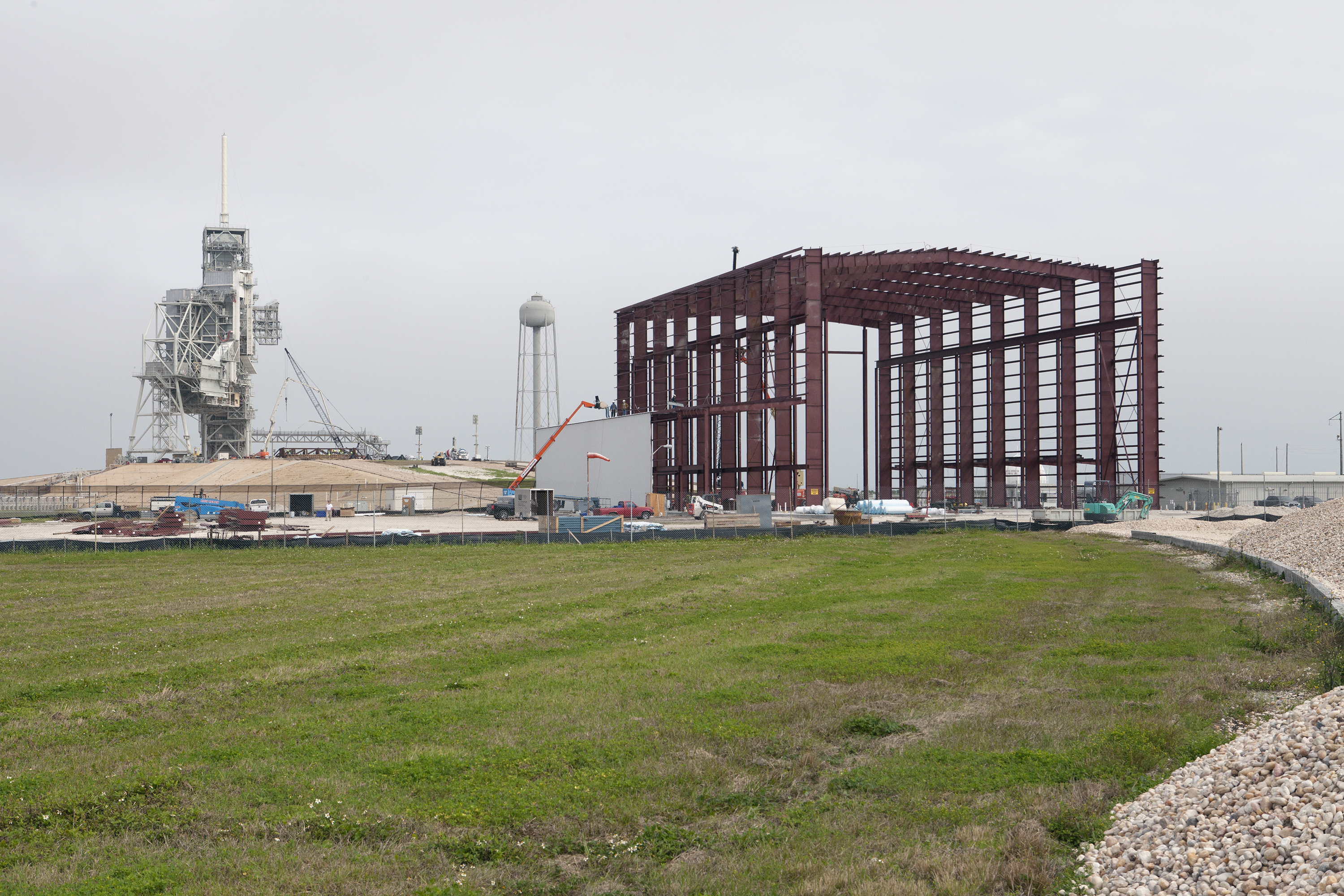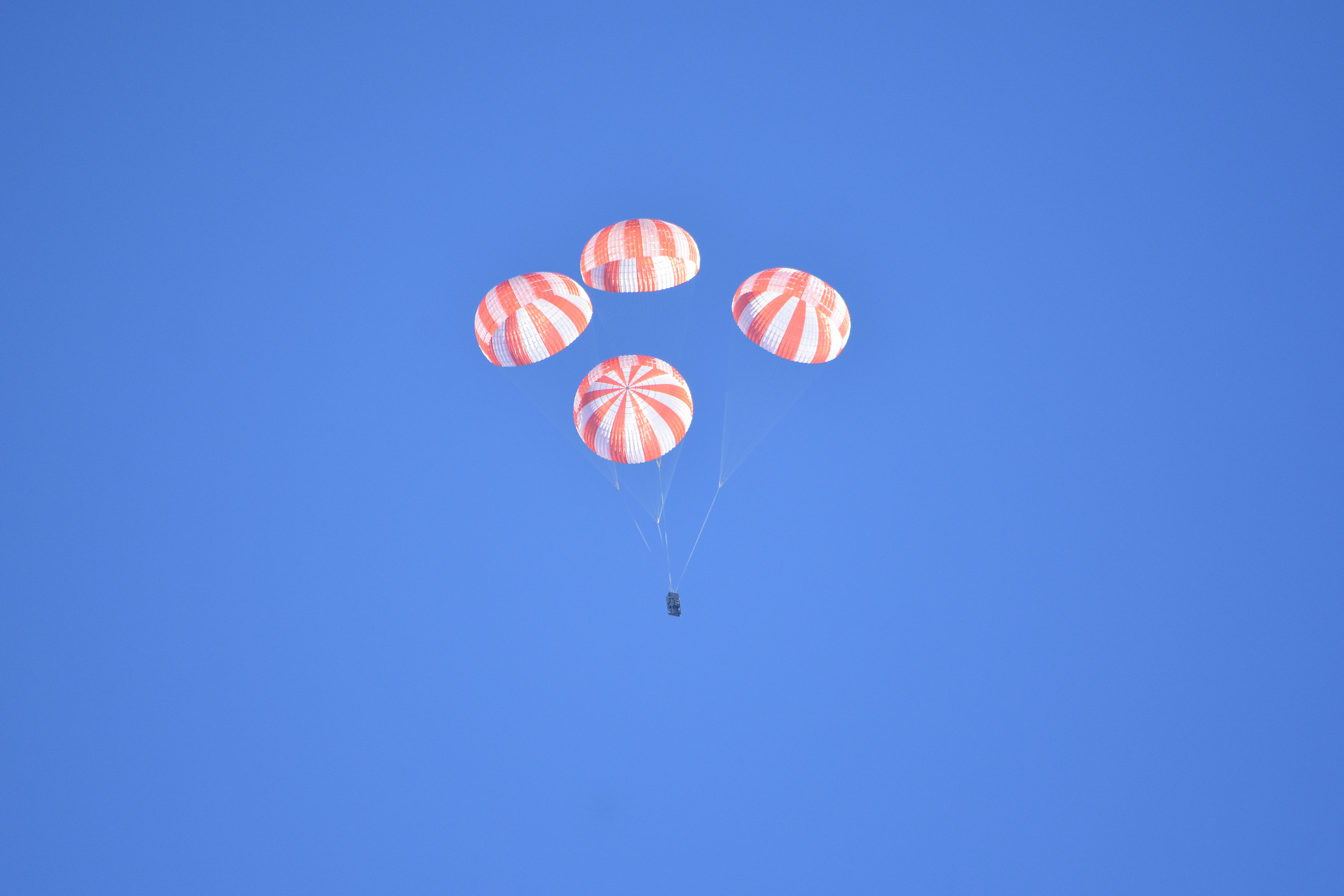 Four red-and-white parachutes unfurled high above the desert near Coolidge, Arizona, recently during a test of the system that initially will be used to safely land SpaceX’s Crew Dragon spacecraft carrying astronauts back from the International Space Station. The test used a mass simulator as the weight of the spacecraft connected to the parachute system. The mass simulator and parachutes were released thousands of feet above the ground from a C-130 cargo aircraft. This test evaluated the four main parachutes, but did not include the drogue chutes that a full landing system would utilize.
Four red-and-white parachutes unfurled high above the desert near Coolidge, Arizona, recently during a test of the system that initially will be used to safely land SpaceX’s Crew Dragon spacecraft carrying astronauts back from the International Space Station. The test used a mass simulator as the weight of the spacecraft connected to the parachute system. The mass simulator and parachutes were released thousands of feet above the ground from a C-130 cargo aircraft. This test evaluated the four main parachutes, but did not include the drogue chutes that a full landing system would utilize.
As part of its final development and certification work with NASA’s Commercial Crew Program, SpaceX continues to perform tests of flight-like hardware that allows engineers to assess the reliability. Later tests will grow progressively more realistic to simulate as much of the actual conditions and processes the system will see during an operational mission.
Initially, the spacecraft will splash down safely in the ocean under parachutes, but ultimately the company wants to land the vehicle on land propulsively using eight SuperDraco engines. SpaceX tested its propulsive land landing ability in Texas in November.
SpaceX and Boeing are working in separate partnerships with NASA to build a new generation of human-rated spacecraft to take astronauts to the International Space Station. Photo credit: SpaceX.

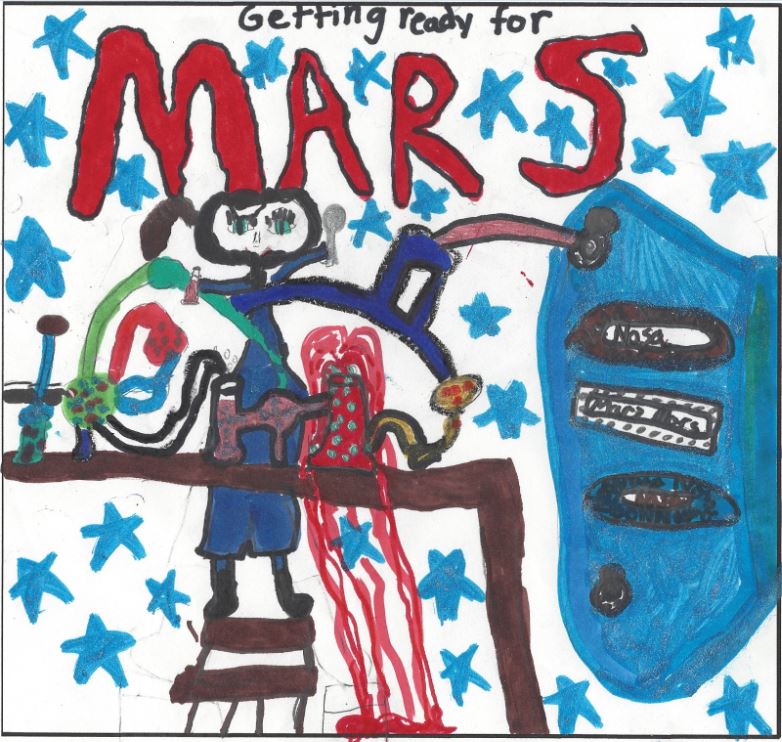



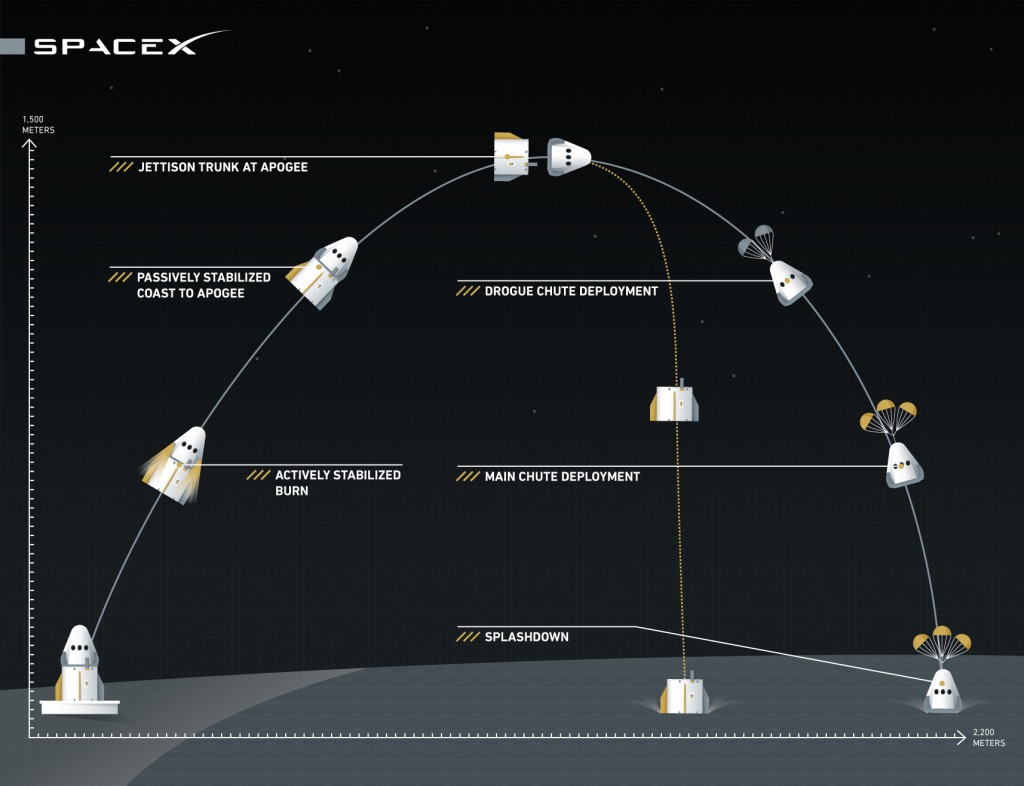

 SpaceX currently is targeting no earlier than Tuesday, May 5, for a pad abort test of its Crew Dragon development spacecraft from Space Launch Complex 40 at Cape Canaveral Air Force Station. The ability to abort from a launch or pad emergency and safely carry crew members out of harm’s way is a critical element for NASA’s next generation of crew spacecraft.
SpaceX currently is targeting no earlier than Tuesday, May 5, for a pad abort test of its Crew Dragon development spacecraft from Space Launch Complex 40 at Cape Canaveral Air Force Station. The ability to abort from a launch or pad emergency and safely carry crew members out of harm’s way is a critical element for NASA’s next generation of crew spacecraft.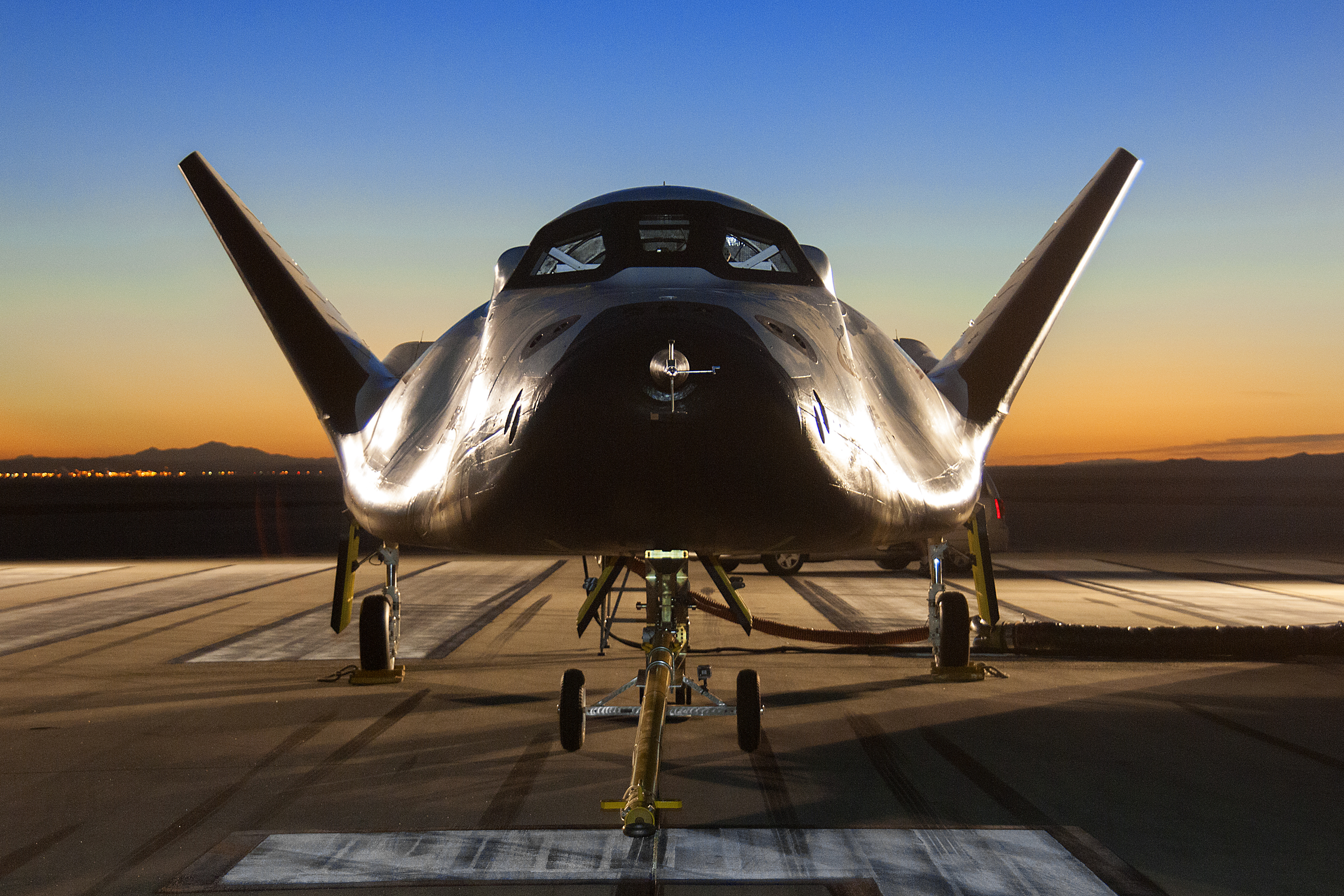 Space Act Agreement with Sierra Nevada Corporation (SNC). The company’s Design Analysis Cycle-6 Closeout Review will demonstrate the advancement of the Dream Chaser Space System from a Preliminary Design Review level of maturity toward a Critical Design Review level. While the new milestone is unfunded, NASA and SNC continue to benefit from each other’s technical expertise. The amendment also extends the partnership through March 2016.
Space Act Agreement with Sierra Nevada Corporation (SNC). The company’s Design Analysis Cycle-6 Closeout Review will demonstrate the advancement of the Dream Chaser Space System from a Preliminary Design Review level of maturity toward a Critical Design Review level. While the new milestone is unfunded, NASA and SNC continue to benefit from each other’s technical expertise. The amendment also extends the partnership through March 2016.